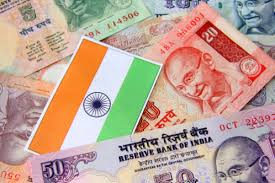India’s economy is back on track. Can it pick up speed?

IT IS easy to be awed by the Indian railway network. The 23m passengers it carries daily travel, in total, over ten times the distance to the sun and back. It is just as easy to find it unimpressive. Delays are frequent and trains antiquated. It takes 14 hours to get from India’s capital, Delhi, to its commercial hub, Mumbai. The equivalent trip in China—from Beijing to Shanghai, a similar distance—takes just over four hours.
Similarly, India’s economy can be seen in two lights. Its long-term growth rate of 7% a year has proved far more dependable than the rail timetable. GDP has doubled twice in the past two decades. Yet deep poverty still lingers and jobs are scarce. And Indian growth has been left in the dust by the Chinese express (see chart).
After slow running for much of 2017, India is now near to full throttle. Growth of 7.2% in the three months to December put it ahead of China (which grew at a relatively leisurely 6.8%) and made it once again the world’s fastest-expanding big economy. Expectations for the rest of 2018 are similar.
Fans of Narendra Modi, India’s prime minister, credit structural reforms he has made over the past four years. The more plausible explanation is that Indian growth has returned to trend after a bout of political meddling. “Demonetisation” in late 2016, when most banknotes ceased to be legal tender overnight, squeezed growth to 5.7% in the first half of last year. New notes were printed, but last July, even as life was returning to normal, a new goods and services tax replaced hundreds of local and nationwide taxes, once again throwing the economy into confusion.
At least the tax overhaul, which knits India into a single market for the first time, will eventually increase growth. Boosters speak of annual GDP gains of 8-10% in the years ahead. That would not be far short of China in its boom years.
Renewed economic vim would be welcomed by the government in the run-up to elections due by early 2019. Even at 7% growth, too few jobs are created to absorb roughly 1m new entrants into the workforce every month. More than 20m people recently applied for 100,000 railway jobs, as train drivers, technicians and porters. A third of 15- to 29-year-olds are not in school, training or jobs. Mr Modi’s opponents have found that the theme of scarce employment opportunities has played well with voters. Faster expansion would help.
But predictions of Chinese-style growth seem over-optimistic in the absence of deeper economic reforms. Doing business in India has become easier in some ways, such as getting permits or bringing in foreign capital. But the labour market is as gummed up as ever. Private businesses find securing land for new factories near-impossible. Whole swathes of the economy, from coal and steel to banking and condom-making, remain at least partly under state control.
The hangover from a bout of over-exuberance dating from before the global financial crisis has left companies financially stretched and with enough production capacity to be able to delay capital expenditure. A few sectors are now contemplating investment—only to find that banks may be unable to provide finance. Loans written off or considered likely to turn sour are near a fifth of the loan book at state-owned lenders, which have about 70% of market share. The resulting losses have left banks short of capital for fresh loans, though a planned bail-out and new bankruptcy code should, belatedly, help clear up the mess. Worse, a recently discovered fraud at a state lender, where rogue employees allegedly facilitated $ 2bn of loans to a diamond merchant who is now nowhere to be found, has highlighted their weak governance.
Early in Mr Modi’s premiership growth was helped by the tumbling price of oil, which India imports in vast quantities. But the price of crude, which fell from $ 110 to $ 30 a barrel during his first two years, has since rebounded to $ 65. Any higher and some familiar problems, namely current-account deficits, budget shortfalls and high inflation, will make an unwelcome return. Yields on Indian government bonds have risen from 6.4% last summer to around 7.5%, indicating some increase in investor concern.
Although India’s growth has depended less than, say, China’s on exports, it has benefited from a buoyant global economy and an open trade environment. The latter may be changing. Indian IT firms are facing restrictions on their employees working in America, challenging their business model. And India itself has taken a protectionist turn, recently imposing tariffs on a wide range of products, from mobile phones to perfume, in an ill-conceived bid to encourage domestic production.
“India is a country that disappoints both optimists and pessimists,” notes Ruchir Sharma of Morgan Stanley, a bank. Naysayers who expected political meddling to hit the economy hard underestimated its resilience. Like commuters whose train has finally pulled in, optimists feel their time has come. All aboard?
This article appeared in the Finance and economics section of the print edition under the headline “Chugging along”





